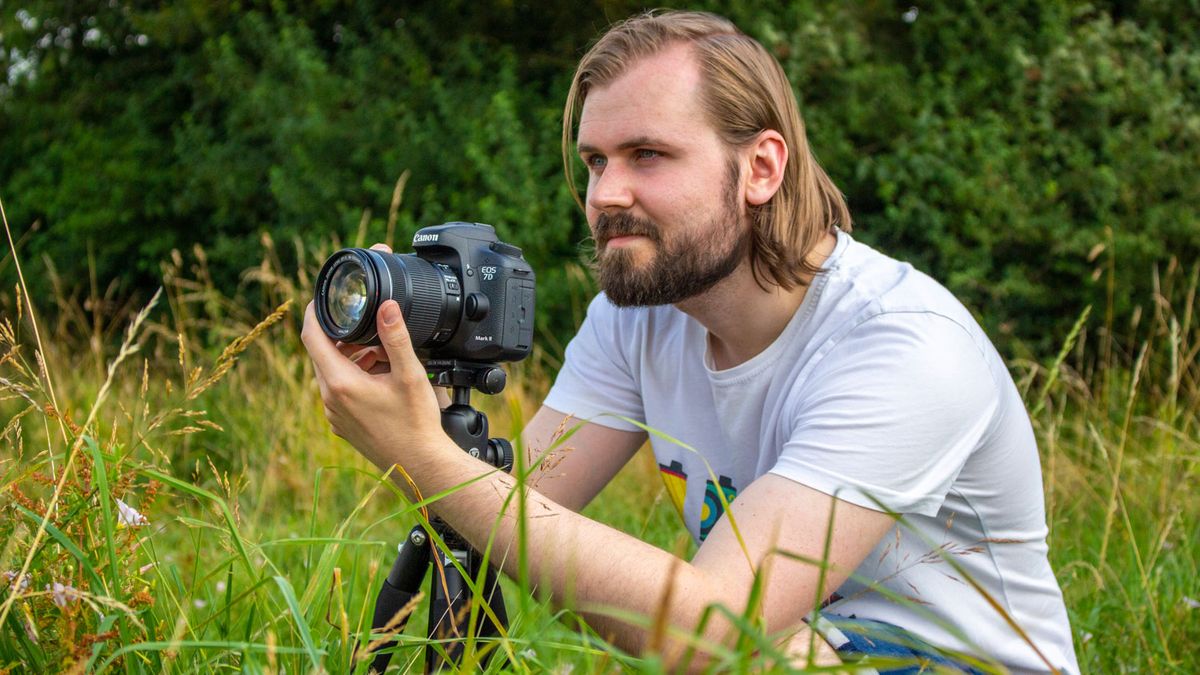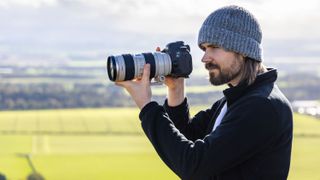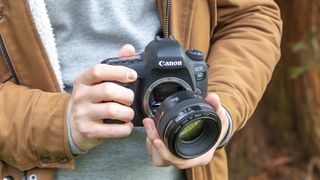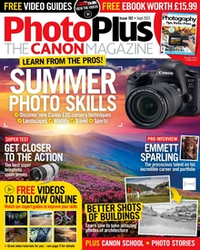
There's an incredible amount of choice when it comes to camera types and models, so it can be difficult to know precisely which camera deserves your hard-earned cash, especially if it's your first time doing so. When you're first starting out, the choice can seem overwhelming with everything from compacts to bridge cameras and DSLRs to mirrorless cameras to choose from.
In this article I'm going to make my case for the humble DSLR and why you should consider one if you're looking to take your photography more seriously. Any DSLR will be a vast improvement from your phone, compact or bridge camera in terms of image quality as most have larger APS-C or full-frame sensors. They also boast more professional features, handling and ergonomics.
So let's start with what a DSLR is and why they're great for a whole bunch of reasons. DSLR stands for Digital Single Lens Reflex. The Single Lens refers to the fact that only one lens is attached to the camera - yes, twin-lens reflex cameras were a thing back in the days of film. They lead to inconsistent framing issues as you'd be composing through a different lens to the one that would be exposing the inserted film. The 'Reflex' part is for the mirror and optical viewfinder that lets you look through the attached lens to see the exact image that you're going to take, so your composition is spot-on - the mirror then flips up and out of the way when you click the shutter.
You can of course still buy non-digital SLR cameras such as the Canon AE-1 or Nikon FM2. These are just versions that expose on film instead of a digital imaging sensor but operate mechanically in much the same way with a mirror and optical viewfinder.
I used an old Olympus OM-10 35mm SLR film camera when I studied photography at college and that was a great tool for getting to grips with semi-automatic modes like aperture and shutter priority. It also taught me some discipline, as you may only have 36 or 24 exposures per film roll - so you can't just rattle off a large burst like we take for granted with modern digital cameras today.

So now we've established what a DSLR is, why should you get one? Well, DSLRs have been around since the 1990's, but the market is now shifting towards mirrorless cameras. As the name suggests, these don't have a mirror and instead you'll need to use the rear LCD or an electronic viewfinder to compose when using one. Powering the LCD and EVF all the time to compose your shots can take its toll on battery performance too, but with a DSLR you're much less likely to run into this problem.
Broadly speaking, this new mirrorless technology comes at a premium, so the older DSLR tech that has been around for longer can work out much cheaper! When you're starting out you'd be better off putting those savings towards extra lenses so you often get more bang for your buck - additional lenses are arguably more important than your camera body!
Get the Digital Camera World Newsletter
The best camera deals, reviews, product advice, and unmissable photography news, direct to your inbox!
We took a look at three popular lenses for Canon's EF (full-frame DSLR) mount, the EF 16-35mm f/2.8 wide angle, 24-70mm f/2.8L standard lens and 70-200mm f/2.8 telephoto lens and compared them to their equivalent Canon RF lenses for Canon's full-frame mirrorless and found the RF lenses to cost 20% more, so there's undoubtedly some big savings to be had by going down the DSLR route.
Also, while electronic viewfinders on mirrorless models are getting better every year, I still personally prefer to look directly through the lens with a DSLR's optical viewfinder, and call me old fashioned but I love the sound of a DSLR's iconic mirror 'clack' when you fire off an exposure too.

Finally, lets talk about lenses...
Another reason that DSLRs are fantastic is they're inter-changeable lens cameras. This means the lens can be detached and you can put another one on, specific to the needs of the shot at hand.
For example if you're shooting sport or wildlife you could swap your lens to a big zoom telephoto to get closer to the action, or if you were shooting a landscape you could go for an ultra-wide angle or even fisheye lens to squeeze in more of your stunning vista.
This also makes DSLRs more favorable to bridge cameras and compacts which use smaller sensors and a fixed zoom lens. The limitation of the smaller sensors and poor image quality due to the extended zoom range mean they often fail to live up to expectations. A shallow depth of field can also be more difficult to achieve with bridges cameras due to the small sensor.
However, with a DSLR you attach a much more specific lens to the scene at hand so you can do it justice - the smaller your zoom range is, the better the lens quality will generally be.
Because DSLRs are long-established you can be sure that the lens you need exists. Nikon is still using its F mount from 1959 which made the transition from SLR to DSLR - you can still use your old film lenses on new DSLRs! We estimate there are over 400 lenses available for the Nikon F mount, whereas there are just 24 lenses for the new mirrorless full-frame Nikon Z mount, first seen in July 2018.
While more lenses are being developed for mirrorless cameras, there's still quite a large gap to fill. By investing in a DSLR you can be sure that you'll be able to find any lens for your needs. Plus, throw in the large number of third-party DSLR lenses available for from manufacturers like Sigma, Tamron, Tokina, Laowa, Samyang and Lensbaby, so DSLRs win on lens choice hands down.
So there you go! If you're looking to buy your first 'proper' camera I hope I've given you some food for thought and explained why I think DSLRs are the best route to go down when you're just getting started with photography.
PhotoPlus: The Canon Magazine is the world's only monthly newsstand title that's 100% devoted to Canon, so you can be sure the magazine is completely relevant to your system. Every issue comes with a disc of video tutorials too. 33% off
Read more:
The Best DSLR
The best full-frame DSLR
What is a DSLR and are they still useful?
DSLR vs mirrorless
Best Canon cameras

Deputy Editor on PhotoPlus: The Canon Magazine, Dan also brings his technical wizardry and editing skills to Digital Camera World. He has been writing about all aspects of photography for over 10 years, having previously served as technical writer and technical editor for Practical Photography magazine, as well as Photoshop editor on Digital Photo.
Dan is an Adobe-certified Photoshop guru, making him officially a beast at post-processing – so he’s the perfect person to share tips and tricks both in-camera and in post. Able to shoot all genres, Dan provides news, techniques and tutorials on everything from portraits and landscapes to macro and wildlife, helping photographers get the most out of their cameras, lenses, filters, lighting, tripods, and, of course, editing software.
